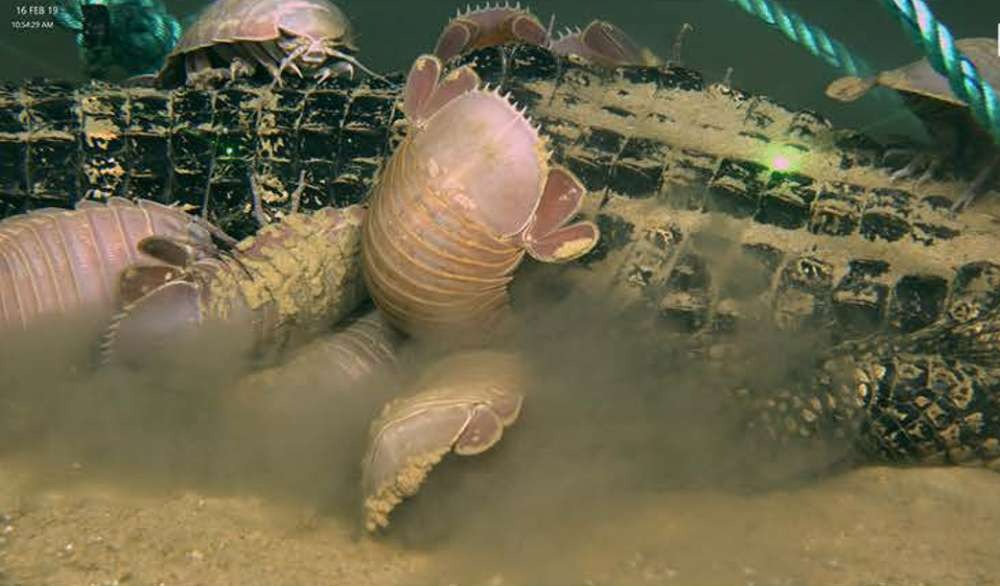
In a groundbreaking scientific endeavor, researchers from the Louisiana Universities Marine Consortium (LUMCON) conducted a unique experiment last year by dropping alligators onto the ocean floor at a depth of 2,000 meters (6,560 feet). The study, now published in PLOS One, offers intriguing insights into deep-sea ecosystems and the creatures that feast on unexpected banquets.

Reptile falls, where large carcasses sink to the seabed, provide scientists with invaluable data on deep-sea ecosystems. The LUMCON team sought to understand how deep-sea dwellers in the Gulf of Mexico would react to an unconventional food source – alligators more commonly found in freshwater environments.
The study revealed remarkable outcomes. One alligator became a feeding ground for giant pink isopods (Bathynomus giganteus), foot-long scavengers that swiftly penetrated the tough hide, burrowed through the skin, and consumed the carcass from the inside out within 24 hours.

The second alligator underwent a thorough scavenging process and was stripped of all soft tissue in just 51 days, exposing a spine and skull. More notably, this revealed a previously unknown species of bone-eating worm, a member of the Osedax family, marking the first appearance of Osedax in the Gulf of Mexico.
The fate of the third alligator remained a mystery, as initial observations eight days later found an empty rope, with the 20-kilogram (44-pound) weight, shackle, and part of the line nearby. The suspicion fell on a large shark, potentially a Greenland or sixgill, with the strength to drag the combined weight of the carcass and attached items.

This research underscores the adaptability of deep-sea organisms to novel food sources, emphasizing the scarcity of resources in these environments. In the deep ocean, where survival depends on seizing opportunities, even an unconventional meal like a dropped alligator becomes a welcomed feast, revealing the fascinating dynamics of the ocean’s depths.

Leave a Reply